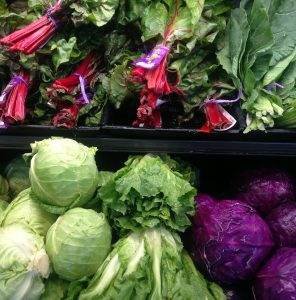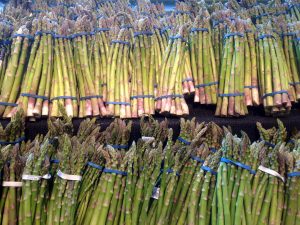 Have you heard of the low FODMAP diet? Or tried the Autoimmune Paleo protocol? Maybe you’re considering going gluten free? Diets such as these that are meant to address health conditions, especially digestive issues, have become very popular. Not only are more functional medicine practitioners recommending some of these diets as part of their treatment protocol, but many people who are struggling with chronic health issues are finding them on their own in an attempt to heal themselves. And while many of these diets can be useful — and in some cases life changing — there is a down side to them as well.
Have you heard of the low FODMAP diet? Or tried the Autoimmune Paleo protocol? Maybe you’re considering going gluten free? Diets such as these that are meant to address health conditions, especially digestive issues, have become very popular. Not only are more functional medicine practitioners recommending some of these diets as part of their treatment protocol, but many people who are struggling with chronic health issues are finding them on their own in an attempt to heal themselves. And while many of these diets can be useful — and in some cases life changing — there is a down side to them as well.
What Is a Therapeutic Diet?
A therapeutic diet is a medically prescribed diet that is managed by your doctor and nutrition provider. Some examples of diets prescribed by conventional doctors include low sodium, renal, texture modified or diabetic. These diets are traditionally aimed at specific health conditions and reduce symptoms, but do not address the root cause of illness. However, functional medicine practitioners frequently rely on dietary recommendations that they believe will help reduce inflammation, calm the immune system, heal the digestive tract or otherwise resolve their patient’s illness. Some of the more popular therapeutic diets of interest right now are gluten free, ketogenic, low FODMAP, Paleo and AIP (autoimmune Paleo). When working with a trained care provider, some of these diets have been shown to be very effective in helping people improve their health. The key is that your provider can help guide not only the appropriate diet for you, but also the timing — how long to stay on the restricted diet. And, they will help you add in foods you tolerate so you don’t miss out on important nutrients. But what about the people trying these diets on their own?
For Your Consideration
As a nutrition professional, of course I would always recommend you work with somebody who is knowledgeable about nutrition before starting a restrictive diet. But I understand that not everybody can or will do that. So, there are some things to consider if you are interested in trying or are already on one of the diets listed above. In many cases, these diets are not intended to be followed for long periods of time. In fact, with the exception of a gluten free diet for people with celiac disease, there is a fair amount of evidence that following these diets strictly for years can be harmful. The reason is that all of these diets exclude entire categories of food, which leaves you vulnerable to vitamin, mineral and other deficiencies. For example, eliminating all dairy products without adding in other sources of calcium can lead to a calcium deficiency. Not all of these diets limit dairy, so the potential for specific nutrient deficiencies has to be evaluated on a case by case basis. But, there is one thing that all of these diets can potentially be low in: fiber.

How Can Something So Right Feel So Wrong?
The irony for people who suffer from chronic digestive problems is that, on the one hand, they don’t tend to tolerate high fiber foods very well, but on the other hand, fiber is necessary to help them support healthy gut flora and heal their digestive tract! As anyone with irritable bowel syndrome or inflammatory bowel disease knows, eating too much fiber can make you miserable with pain, bloating or gas. And yet, fermentable fibers feed our good bacteria, supporting a healthy microbiome. Balanced gut flora is important not just for digestive healing, but for a whole host of other health issues including autoimmunity, immune function or food allergies to name a few. It is now known that within a few weeks of removing prebiotic fiber sources of carbohydrate from the diet the makeup of the gut bacteria will change.
So, how do you support your intestinal bacteria while following a diet that limits the carbohydrates that feed them? With the gluten free, ketogenic and Paleo diets, the answer is more straightforward because it is not as difficult to find foods within the diet protocol that you can add in that provide the undigestible fiber that feeds your gut flora. For example, making sure to eat multiple servings of cruciferous vegetables (arugula, bok choy, Brussels sprouts, cabbage, cauliflower, chard, collards, kale, radish, watercress), leafy greens, onions, garlic, leeks and fermented vegetables such as sauerkraut or kimchi every day will keep your GI tract happy. You can also add resistant starches that don’t affect blood sugar, such as potato starch. And there are many high-fiber, whole foods substitutes for gluten containing grains for those who are still consuming grains, including amaranth, buckwheat, quinoa or millet.
The low FODMAPs diet is a bit more challenging because it specifically limits the type of fiber that your gut bacteria ferments. It is the process of fermentation that frequently causes the symptoms of gas, bloating and pain that leads people to follow these diets in the first place! However, the low FODMAP diet does not recommend complete elimination of foods for more than a few weeks, so an important first step is to make sure you proceed from the elimination phase to the challenge phase. The purpose of the low FODMAP diet is to identify how much of which foods contribute to symptoms. So, those following a low FODMAP diet can still eat a wide variety of whole grains, vegetables, fruit and legumes but will just need to limit their portion size based on their symptoms. And, chia seeds are a great source of fiber that tend to be well tolerated by most people. In addition, people on this diet can also include sources of resistant starch such as bananas, oatmeal or potatoes to feed their microbiome.
More Veggies, Please!
If you are currently following one of these diets and are unsure whether or not you’re eating a balanced diet, a good starting point is to add vegetables with each meal. And if you are also following any other restrictive diet, such as vegan, vegetarian or dairy free, please work with a dietitian to make sure you’re getting everything you need!
Great info! So many people jump on the bandwagon of these various diets without knowing what they’re getting themselves into. Lots of good stuff to keep in mind.
It’s refreshing to read an informed, balanced view of these various diets that are touted as the latest and greatest new fad.
Thank you, I’m glad you liked it!